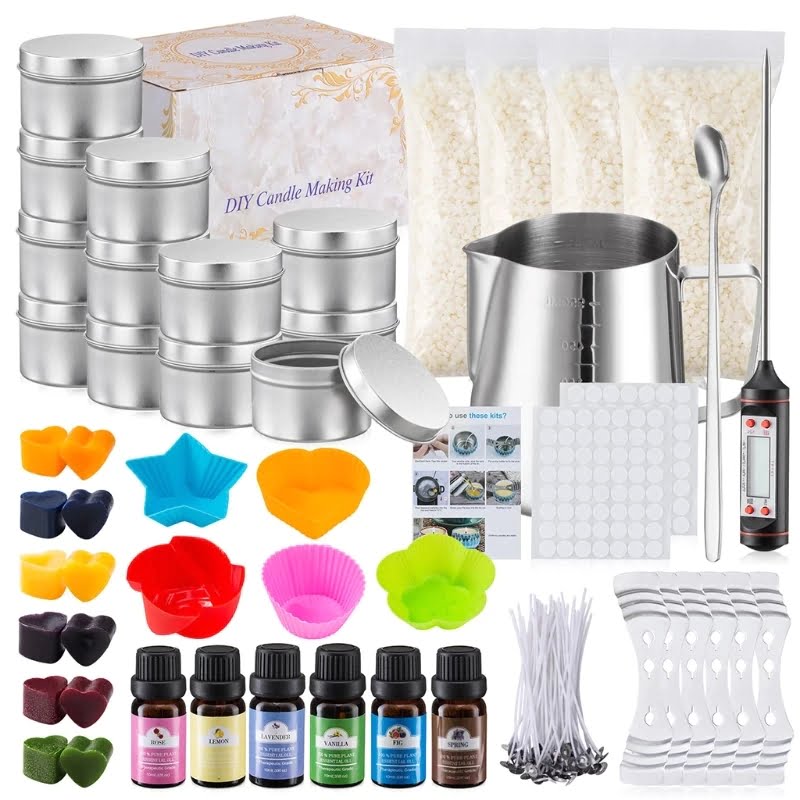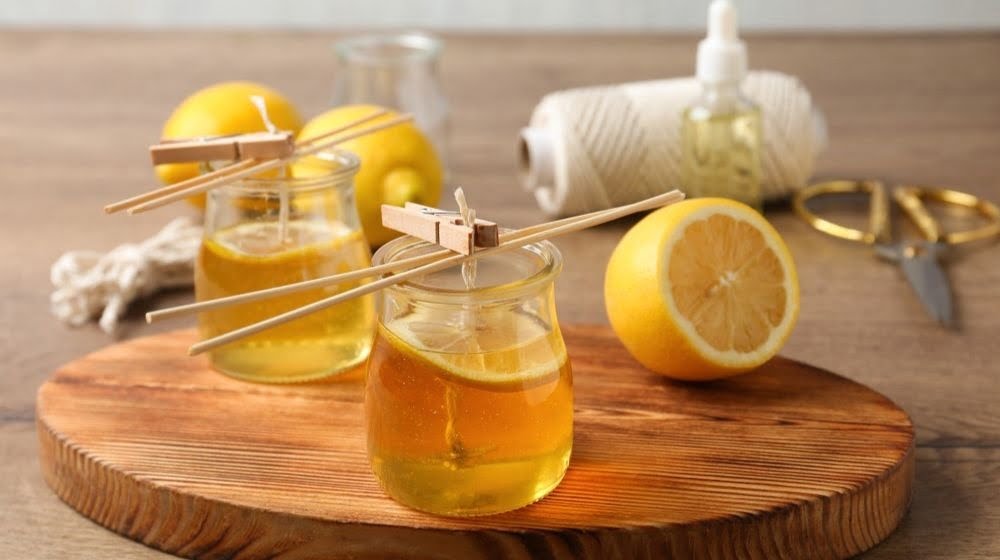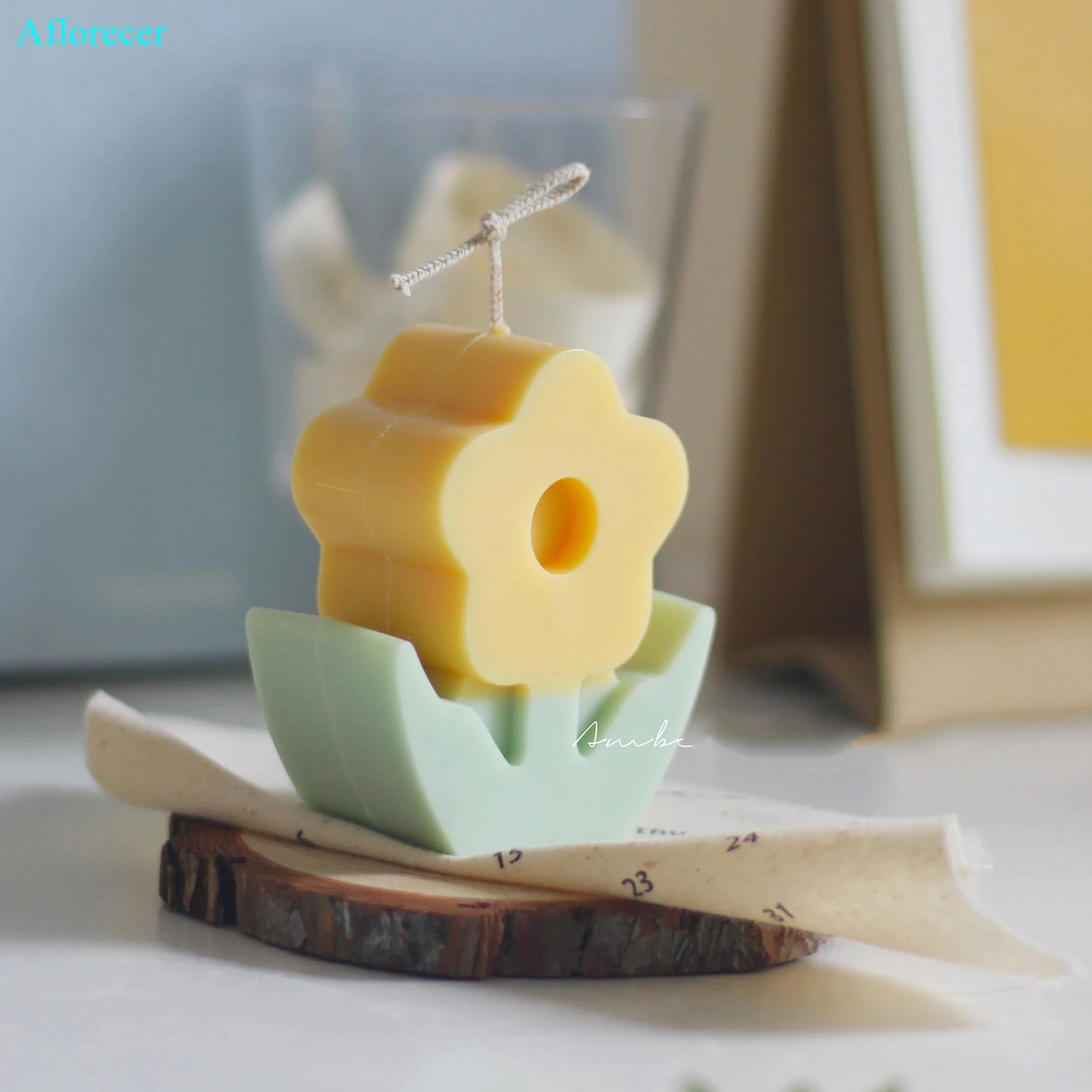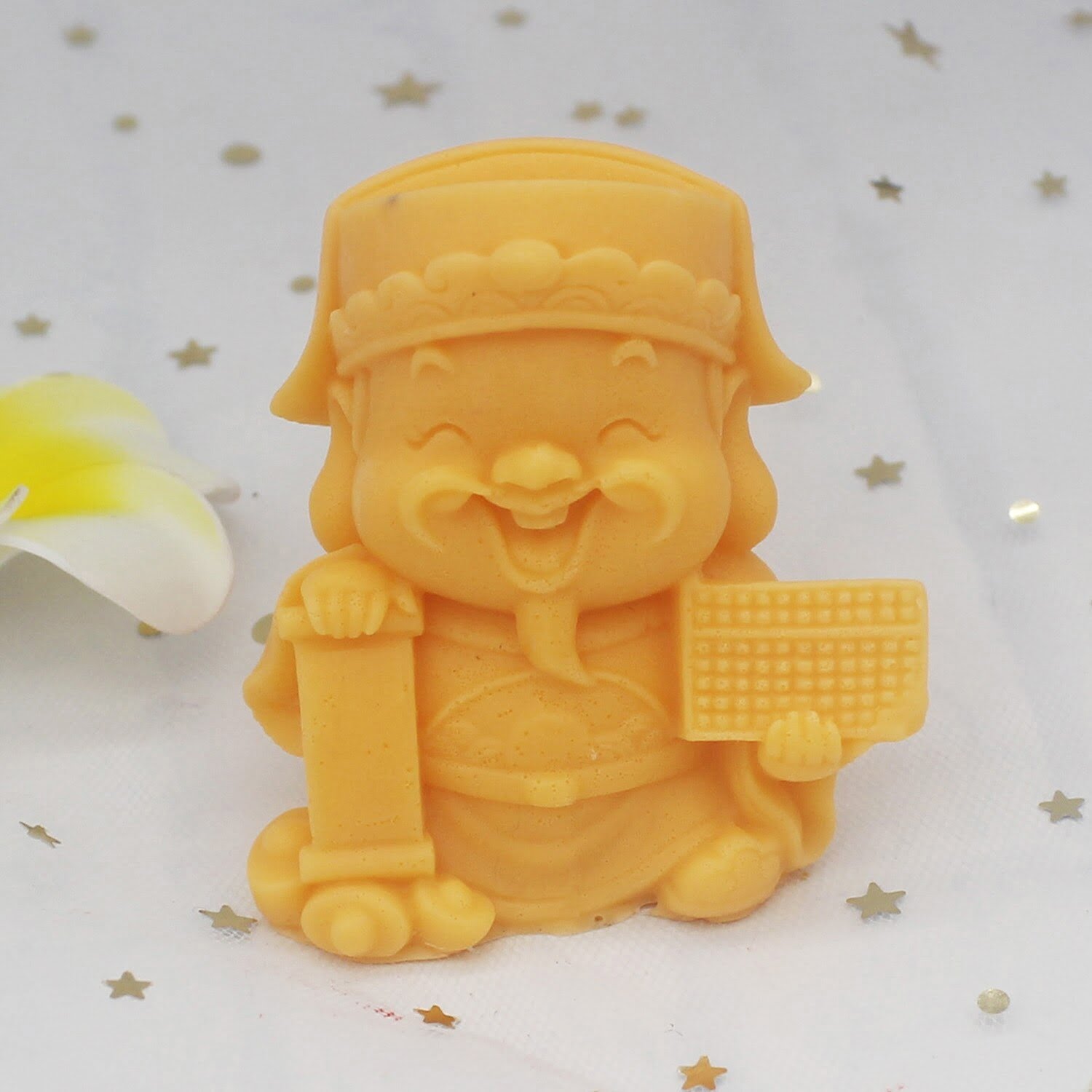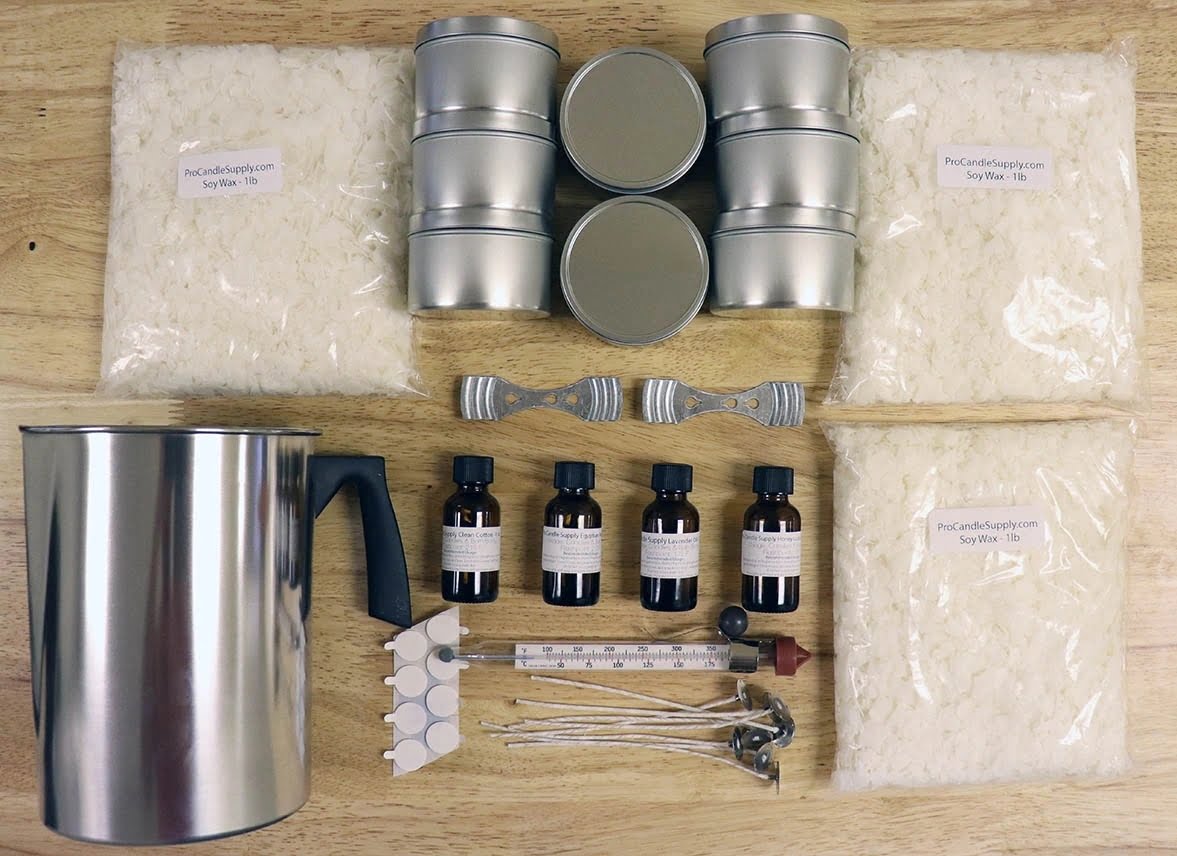When it comes to candle making, using a double boiler is an essential tool that can greatly enhance your crafting experience. A double boiler provides a gentle and consistent source of heat, ensuring that your wax melts evenly without the risk of scorching or overheating. In this introductory section, we will discuss what a double boiler is and why it is beneficial for candle making.
A double boiler consists of two separate pots – one larger pot filled with water, and another smaller pot placed inside the larger one. The smaller pot holds the wax or other materials you are melting, while the hot water in the larger pot provides indirect heat to melt your ingredients slowly and evenly. This setup helps maintain a steady temperature throughout the melting process, preventing any sudden changes that could affect the quality of your candles.
Using a double boiler for candle making offers several advantages over other methods. One major benefit is temperature control. The water in the outer pot acts as a buffer, preventing direct heat contact with the wax and reducing the chances of it getting too hot or starting to boil. This allows you to achieve and maintain an optimal melting temperature without risking damage to your wax or compromising its fragrance.
Moreover, by using a double boiler, you eliminate direct exposure to open flames or heating elements commonly found in other heating methods. This significantly reduces the risk of fire hazards during candle making. With proper temperature regulation and added safety measures, such as monitoring closely and avoiding leaving your workstation unattended while melting wax, you can enjoy a worry-free candle-making experience.
In summary, utilizing a double boiler for candle making ensures steady and gentle heat throughout the melting process. By maintaining proper temperature control and minimizing fire hazards associated with direct heat exposure, you can create high-quality candles every time.
In the following sections, we will delve deeper into building your own homemade double boiler, important safety precautions when working with hot wax, maintaining and cleaning your apparatus, as well as exploring alternative options available in the market for those who prefer ready-made solutions.
The Benefits of Using a Double Boiler for Candle Making
Using a double boiler for candle making offers several benefits compared to other methods. One of the main advantages is the ability to maintain proper temperature control throughout the melting process. Melting wax requires steady and gentle heat, as too much heat can cause the wax to become overheated and potentially catch fire. A double boiler helps in achieving this by providing indirect heat, ensuring that the wax melts gradually and evenly.
Another benefit of using a double boiler is that it helps to avoid direct heat contact with the wax. Direct heat sources like stovetops or open flames can be dangerous when working with flammable materials like wax. The double boiler acts as a barrier between the heat source and the melting wax, reducing the risk of accidents and fire hazards.
A double boiler also allows for more precise temperature control, which is crucial for achieving desired results in candle making. Different types of waxes have specific melting points, and maintaining these temperatures ensures consistent and high-quality candles. By using a double boiler, you can monitor and adjust the heat more easily, preventing your wax from getting too hot or cooling down too quickly.
In summary, using a double boiler offers benefits such as temperature control, avoidance of direct heat, and prevention of potential fire hazards during candle making. These advantages contribute to a safer and more efficient candle making process overall.
Materials Needed to Make a Double Boiler for Candle Making
To make a double boiler for candle making, you will need a few essential materials. These materials are easily accessible and affordable, making it convenient for anyone to create their own homemade double boiler. Here is a detailed description of each item and its purpose:
- Saucepan: The saucepan will serve as the base of your double boiler. It should be large enough to hold the wax container or pouring pitcher comfortably. Choose a saucepan with a sturdy handle and a size that matches the amount of wax you will be melting.
- Heat-proof glass or metal container: This container will hold the wax and sit inside the saucepan. It should be heat-proof and able to withstand high temperatures without cracking or melting. A pouring pitcher specifically designed for candle making is an excellent option as it usually has a spout for easy pouring.
- Water: Water is an important component of the double boiler setup. It will surround the inner container holding the wax, providing gentle and indirect heat for safe melting. Ensure that you have enough water to create steam, but not so much that it overflows when heated.
- Thermometer: To maintain proper temperature control, a thermometer is crucial when using a double boiler for candle making. Make sure it has a temperature range suitable for candle making (usually around 120-180 degrees Fahrenheit). This ensures that your wax melts efficiently without reaching dangerous temperatures.
While these are the basic materials needed to make a homemade double boiler, there are also affordable alternatives available if you’re on a budget:
- Substitute a heat-resistant bowl for the glass or metal container.
- Instead of purchasing a pouring pitcher, use any heat-resistant container with a spout (such as an old measuring cup or coffee pot).
- If you don’t have specific candle-making utensils, use kitchen items such as tongs or oven mitts to handle hot containers safely.
By gathering these materials, you can easily assemble a double boiler for candle making in the comfort of your own home.
Step-by-Step Guide
To make a double boiler for candle making, follow these step-by-step instructions:
Step 1: Gather the Materials
Before you begin, make sure you have all the necessary materials to create your homemade double boiler. Here’s what you’ll need:
- A large pot: This will serve as the outer pot of your double boiler. Choose a pot that is deep enough to hold your melting container comfortably.
- A smaller heatproof container: This will be placed inside the larger pot and hold your candle wax. It should fit snugly inside without touching the sides or bottom of the outer pot.
- Water: You’ll need enough water to fill the outer pot around one-third to halfway.
- Stove or heat source: Make sure you have access to a stove or other heat source for melting your wax.
Step 2: Set Up the Double Boiler
Once you have all your materials ready, it’s time to set up your double boiler:
- Fill the larger pot with water, ensuring that it doesn’t exceed one-third to halfway so that it doesn’t come in contact with the smaller container when placed inside.
- Place the smaller heatproof container inside the larger pot, making sure it floats on top of the water without touching the sides or bottom of the outer pot.
- Adjust the heat source to a low or medium setting and turn it on.
- Allow the water in the larger pot to gradually heat up until it reaches a gentle simmer.
Step 3: Start Melting Your Wax
With your double boiler set up, it’s time to start melting your candle wax:
- Measure out your desired amount of candle wax and place it into the smaller container.
- As the water in the larger pot heats up and creates steam, this indirect heat will gradually melt down your wax without the risk of overheating or direct flames.
- Stir the wax occasionally with a heatproof utensil to ensure even melting.
- Use a thermometer to monitor the temperature of the wax, making sure it doesn’t exceed the recommended temperature for your specific type of wax.
By following these steps, you can create a homemade double boiler for candle making and ensure a safe and efficient melting process for your wax. Remember to always prioritize safety, handle hot materials with care, and enjoy your candle making experience.
Safety Precautions When Using a Homemade Double Boiler
When using a homemade double boiler for candle making, it is crucial to prioritize safety precautions to prevent accidents and ensure a smooth and enjoyable experience. Here are some important tips to keep in mind:
- Use a heat-resistant container: When using a double boiler, always make sure that the container you choose is heat-resistant. Avoid using plastic containers or utensils as they can melt or deform when exposed to high temperatures. Opt for stainless steel or glass containers instead.
- Handle hot wax with caution: The melted wax in the double boiler can reach high temperatures, so it is essential to handle it carefully. Use protective gloves or oven mitts when working with hot wax, and avoid any unnecessary contact with your skin.
- Keep the double boiler stable: Make sure that your homemade double boiler is stable and secure on the stovetop or heating source you are using. This will help prevent accidental spills or tipping over of the apparatus during the candle making process.
- Avoid leaving unattended: Never leave your homemade double boiler unattended while it is in use. Always stay present and attentive during the melting process to monitor the temperature and make adjustments as needed.
- Use proper ventilation: Candle making involves melting wax, which can release fumes into the air. It is important to work in a well-ventilated area to prevent inhalation of these fumes. Open windows or use a fan to ensure good airflow throughout your workspace.
In addition to these precautions, it is also crucial to have fire safety measures in place when working with open flames and hot wax:
- Keep a fire extinguisher nearby.
- Do not place flammable objects near the double boiler.
- Never pour water onto a wax fire; use baking soda or a fire extinguisher instead.
- Wait for melted wax to cool before disposing of it properly.
By following these safety guidelines, you can enjoy your candle making experience without putting yourself or others at risk. Remember, safety should always be a top priority when working with any DIY project, especially when dealing with heat and open flames.
| Danger | Safety Measure |
|---|---|
| High temperature of melted wax | Use protective gloves or oven mitts when handling hot wax. |
| Potential for spills or tipping over | Ensure the double boiler is stable and secure on the stovetop or heating source. |
| Inhalation of fumes | Work in a well-ventilated area or use a fan to ensure good airflow. |
| Possible fire hazards | Keep a fire extinguisher nearby and never pour water onto a wax fire; use baking soda or a fire extinguisher instead. |
Maintaining and Cleaning Your Homemade Double Boiler
After you have successfully made and used your homemade double boiler for candle making, it is important to properly maintain and clean the apparatus. This will help ensure its longevity and prevent any residue build-up or issues that may affect future candle-making sessions. Here are some tips to effectively maintain and clean your homemade double boiler:
Tips for Cleaning
- Allow the double boiler to cool down completely before attempting to clean it.
- Remove any remaining wax by gently scraping it off with a spoon or spatula.
- Fill the bottom pot of the double boiler with warm water and a small amount of dish soap.
- Place both pots back onto the stove and heat them over low heat for several minutes to loosen any stubborn wax residue.
- Use a soft sponge or cloth to scrub the pots, paying extra attention to areas with wax residue.
- Rinse both pots thoroughly with warm water to remove all soap residue.
Storing Your Homemade Double Boiler
- Make sure the double boiler is completely dry before storing it to prevent molding or rusting.
- Stack the two pots together, making sure they are fully dry inside and out.
- Store the double boiler in a cool, dry place away from direct sunlight or humidity.
- If possible, use a cloth or paper towel to separate the two pots when stacked to prevent scratching or damage.
Avoiding Residue Build-Up
- Whenever using your homemade double boiler for candle making, be sure not to exceed the recommended melting temperature for your wax type.
- Regularly check for any signs of residue build-up during candle making sessions, especially around the rims and bottom of both pots.
- If necessary, wipe away any excess melted wax with a cloth or paper towel before continuing with your candle making process.
By following these maintenance and cleaning tips, you can enjoy your homemade double boiler for many candle-making sessions to come. Remember to prioritize safety and take the necessary precautions when using hot wax, and always have a fire extinguisher nearby in case of emergencies. Happy candle making.
Alternative Double Boiler Options for Candle Making
When it comes to candle making, using a double boiler is a popular method for safely and effectively melting wax. However, for those who may not have the time or resources to make their own double boiler, there are alternative options available in the market. This section will explore some of these commercial double boiler options and compare their features.
One option for a ready-made double boiler is purchasing a stainless steel or aluminum insert that fits inside your existing pot. These inserts typically have a handle for easy removal and come in various sizes to accommodate different amounts of wax. They provide a convenient solution for those who already have pots or pans suitable for candle making.
Another alternative is to purchase a dedicated double boiler set specifically designed for candle making. These sets often come with multiple pots or containers that stack together neatly, allowing you to melt different colors or scents of wax simultaneously. They may also include additional accessories such as pouring spouts or temperature gauges for added convenience.
It is important to consider the material quality and durability when choosing an alternative double boiler option. Look for products made from heat-resistant materials that can withstand prolonged use without warping or discoloration. Additionally, check if the product is compatible with different heat sources such as electric stovetops, gas burners, or hot plates.
| Double Boiler Option | Material | Features | Price |
|---|---|---|---|
| Stainless Steel Insert | Stainless steel | – Removable handle
| $10 – $20 |
| Dedicated Double Boiler Set | Aluminum or stainless steel | – Multiple pots for simultaneous melting
| $30 – $50 |
Ultimately, the choice of which alternative double boiler option to go for will depend on personal preference and budget. It is recommended to read reviews and compare prices before making a purchase. Regardless of whether you choose to make your own double boiler or opt for a commercial product, using a double boiler for candle making is a great way to ensure safe and consistent results.
Conclusion
In conclusion, using a double boiler for candle making offers numerous benefits that can enhance your overall candle making experience. By providing steady and gentle heat, a double boiler ensures that your wax melts smoothly and evenly without it getting too hot or overheating. This not only helps to preserve the quality of your candles but also reduces the risk of accidents associated with direct heat and potential fire hazards.
Creating your own double boiler for candle making is simple and cost-effective. With just a few basic materials, you can assemble a homemade double boiler that will serve you well in your candle making journey. By following the step-by-step guide provided, you can set up the apparatus securely and efficiently, ensuring optimal temperature control throughout the melting process.
While using a homemade double boiler is an excellent option, there are also alternative options available in the market for those who prefer ready-made solutions. By exploring different commercial products and considering their features, you can find a pre-made double boiler set that suits your specific needs and preferences.
Frequently Asked Questions
Do you need a double boiler for candle making?
The use of a double boiler is not essential for candle making, but it can be helpful in maintaining a controlled temperature while melting wax. A double boiler consists of two separate pots, one placed inside the other. The bottom pot holds water and is brought to a simmer, while the top pot holds the wax and is heated by the indirect heat from the steam created by the boiling water below.
This indirect heat helps prevent direct contact of heat to the wax, reducing the risk of scorching or overheating. While not necessary, using a double boiler can provide more control during the melting process.
How to make a simple double boiler?
Making a simple double boiler at home is relatively easy and doesn’t require any specialized equipment. You can create one by using a heat-resistant glass or metal bowl that fits snugly on top of a saucepan or pot with simmering water. Fill the bottom pot about halfway with water and bring it to a gentle simmer over low to medium-low heat.
Place your chosen bowl on top of it, ensuring that it does not touch the simmering water below. Then, add your wax into the upper bowl and allow it to melt gradually with the gentle heat generated by the steam from the simmering water. Remember to stir continuously until all the wax has melted thoroughly.
How do you melt wax without a double boiler?
If you don’t have access to a double boiler, there are alternative methods for melting wax without one. One commonly used method involves creating an improvised Bain Marie using any heat-resistant glass or metal container placed directly into a larger pan filled with hot water.
Similar to using a double boiler, you place your container with wax into this water-filled pan and allow it to melt gently using indirect heat from hot water rather than direct contact with high temperatures.

Welcome to my candle making blog! In this blog, I will be sharing my tips and tricks for making candles. I will also be sharing some of my favorite recipes.

